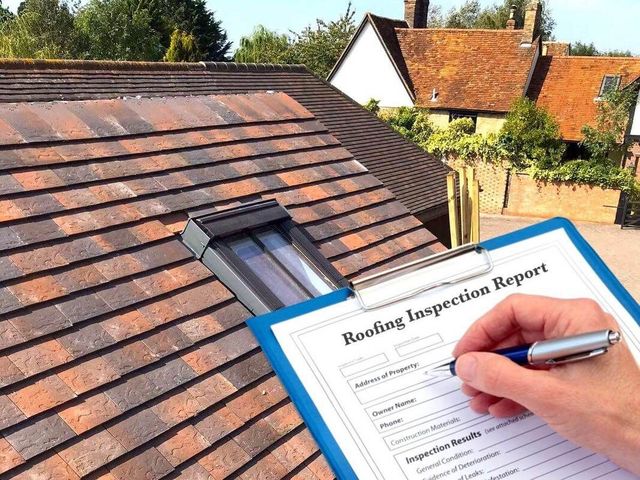What Every Property Owner Should Know About Roof Inspection Austin TX for Maximum Roof Protection
The Crucial Overview to Roofing System Inspection: Securing Your Home Against Typical Damage
Normal roof covering inspections are a crucial component of home maintenance that can avoid minor problems from intensifying into significant problems. As we explore the common signs of roof damage and effective upkeep approaches, it comes to be noticeable that an aggressive technique is crucial for guarding your financial investment.
Relevance of Normal Roofing Evaluations
Regular roof examinations are critical for keeping the stability of a building's framework. These assessments function as a proactive action to determine potential concerns before they escalate right into costly fixings or substantial damage. By performing routine analyses, home owners can guarantee that their roof coverings stay in optimum problem, thus extending their life expectancy.
During these inspections, different factors are examined, consisting of the condition of roof shingles, blinking, and drainage systems. In addition, the presence of moss, algae, or debris can be discovered, permitting timely remediation. Resolving minor issues beforehand can prevent a lot more considerable problems, such as leaks or structural degeneration, which might compromise the safety of the building.
Additionally, normal roof inspections add to power performance. A well-kept roof covering minimizes heat loss throughout colder months and decreases the stress on home heating and cooling down systems. This, subsequently, can lead to lower utility expenses and a lowered carbon impact.
Usual Signs of Roof Damages
Identifying common indications of roofing damage is necessary for home owners to preserve the security and durability of their property. Among one of the most visible indicators is the presence of missing out on, split, or curled roof shingles. These conditions can compromise the roof's honesty, bring about leaks and further deterioration. In addition, granule loss, commonly visible in gutters or on the ground, signals that tiles are aging and shedding their safety abilities.
Another essential indicator is water stains on ceilings or wall surfaces inside the home, which frequently suggest leaks originating from the roof. House owners ought to additionally inspect for mold and mildew or mold growth, as these can flourish in damp conditions triggered by roof leaks.
Blinking around vents and chimneys ought to be looked for corrosion or damage, as defective blinking can permit water to penetrate the roofing system framework. Drooping locations on the roof covering surface might recommend structural issues, requiring instant interest. By identifying these indicators early, homeowners can take proactive steps to attend to roofing damages, eventually securing their home from expensive fixings and making certain a sturdy roof.
Seasonal Roof Covering Upkeep Tips
Identifying the indicators of roofing damage is just the first step in ensuring the long life of your roof covering system; continuous maintenance is equally important. Seasonal roof covering upkeep is critical to not just prolong the life of your roofing however likewise to avoid costly repair work down the line.
During springtime, inspect your roof covering for any type of signs of winter damages, such as split shingles or displaced blinking. Tidy gutters and downspouts to ensure proper water drainage. In summer season, check for moss or algae growth, and think about applying a protective sealer to avoid moisture buildup.
As autumn approaches, get rid of leaves and particles from your roofing and gutters. This will certainly assist minimize the threat of water pooling and possible leaks. It's also a great time to take a look at the roofing for any indications of wear, such as loosened roof shingles or rusted flashing.
Do It Yourself Roof Covering Examination List
A thorough do check it yourself roof covering examination list is vital for house owners wanting to maintain the honesty of their roof. Begin by taking a look at the roofing surface for any kind of noticeable indications of damage, such as missing out on, broken, or curling tiles - Roof Inspection Company. Pay attention to areas around vents, skylights, and smokeshafts, as these are typical leakage points

Moving to the interior, inspect the attic room special info for indicators of water breach, such as spots or mold growth. Ensure correct air flow to avoid wetness accumulation, which can lead to deterioration.
## When to Hire a Specialist
While many homeowners can perform fundamental roofing system inspections, particular scenarios require the knowledge of a professional. If you identify considerable damage, such as huge missing out on shingles, noticeable sagging, or water stains on the ceiling, it is crucial to consult a certified roof contractor. These problems may show underlying structural issues that require prompt attention.
Additionally, if your roofing is nearing completion of its expected life expectancy-- generally 20 to 25 years for asphalt shingles-- it is smart to have a specialist assessment. Experienced assessors can assess the roofing's problem and offer enlightened recommendations on repair service or substitute.
Severe weather occasions, such as hailstorms or hefty winds, also necessitate additional hints expert analysis. Even minor damage can cause substantial problems if left untreated. In addition, if you're considering marketing a residential or commercial property or getting, a professional assessment can reveal potential issues that may impact the deal.
Conclusion
Regular roof inspections are essential for keeping the honesty of property frameworks. Positive assessments make it possible for the very early identification of potential issues, thereby guaranteeing and preventing expensive repairs energy effectiveness. By sticking to seasonal upkeep ideas and making use of a thorough do it yourself checklist, homeowners can efficiently monitor their roof coverings. The competence of a specialist ought to not be forgotten, particularly when considerable damages is thought. Prioritizing roof covering examinations ultimately adds to a safe and protected living environment.

During springtime, inspect your roofing for any indicators of wintertime damage, such as split tiles or displaced blinking. Begin by analyzing the roofing surface area for any noticeable indications of damages, such as missing, broken, or curling roof shingles.